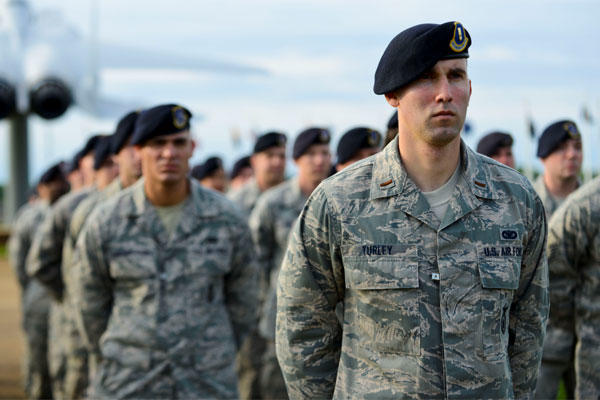The Air Force will soon begin deploying combat support airmen under a revised rotation model to help the service manage mission and training requirements more efficiently.
The new air expeditionary force (AEF) construct, scheduled to take effect October 1, is designed to look at ways to deploy more Agile Combat Support (ACS) airmen with their units and standardize dwell times across the Air Force as much as possible, according to a service statement.
Under the revised AEF construct, installations will deploy larger numbers of ACS airmen from the same unit under a 1:2 deploy-to-dwell ratio. The revised construct establishes an 18-month battle rhythm where an airman may deploy for six months and be home for 12, Air Force officials said.
In the past, airmen deployed as individuals or small elements via "tempo bands" based on their Air Force specialty codes. Those airmen met downrange from bases across the Air Force. ACS airmen are typically made up of mission support group units.
"This new construct will facilitate even better teamwork and unit performance during deployed operations," said Air Force Chief of Staff Gen. Mark Welsh. "I visited a deployed squadron last year that was manned by 81 airmen from 41 different bases. While we've proven we can be successful with that approach, we believe the new AEF model is a more efficient way to get the job done."
While there are some other subtle changes, the most noticeable change to ACS airmen will be a stabilized battle rhythm at 1:2 deploy-to-dwell ratio.
Some airmen will see this battle rhythm as an increase in their deployment vulnerability, Air Force officials said. Requirements for most skill sets have remained constant, but those who deployed less frequently may be more vulnerable. Not all airmen will be selected for deployment in their vulnerability window.
Air Force leadership has worked hard to secure 1:2 as the standard battle, but there may still be some high-demand specialties that may deploy under a different scheduling construct, according to the release.
Air Force officials said the new AEF construct was not introduced because of the budget cuts and force strength reductions.
"This update to the AEF was started three years ago and was designed to better understand our capacity, so we could effectively answer CCDR requests for our forces. It was not in response to the current end strength cuts," said Jennifer Cassidy, an Air Force spokeswoman, in an email to Military.com.
The new construct allows the Air Force to better understand its available capacity, and it allows airmen to have a better idea of when they will be deploying within the given year, Air Force officials said.
"Previously, Air Force specialty codes played a large role in determining an airman's battle rhythm and deployment location; the redesign focuses on aligning airmen to deploy with their unit," Col. Stephen Hart, the Chief of War Planning and Policy Division, said in a release. "Deploying with members of their own unit increases continuity of work, allows our junior airmen to deploy with their supervisor, trainers, and enhances the skills and management of wing missions."
-- Matthew Cox can be reached at matthew.cox@monster.com
































